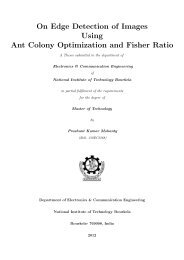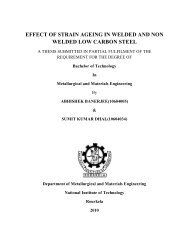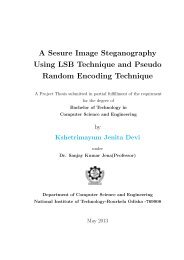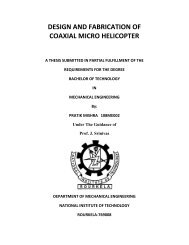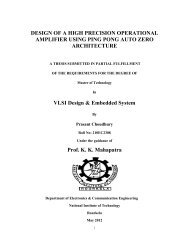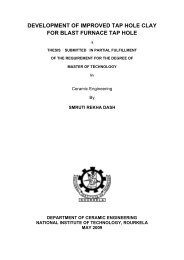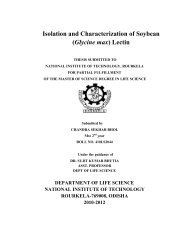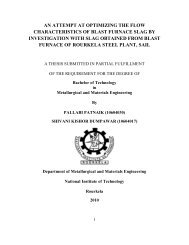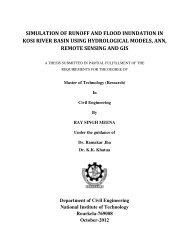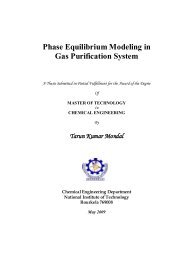analysis of transient heat conduction in different geometries - ethesis ...
analysis of transient heat conduction in different geometries - ethesis ...
analysis of transient heat conduction in different geometries - ethesis ...
You also want an ePaper? Increase the reach of your titles
YUMPU automatically turns print PDFs into web optimized ePapers that Google loves.
CHAPTER 4<br />
RESULTS AND DISCUSSION<br />
4.1 HEAT FLUX FOR BOTH SLAB AND CYLINDER<br />
We have tried to analyze the <strong>heat</strong> <strong>conduction</strong> behavior for both Cartesian and cyl<strong>in</strong>drical<br />
geometry. Based on the previous <strong>analysis</strong> closed form solution for temperature, Biot number,<br />
<strong>heat</strong> source parameter, and time for both slab and tube has been obta<strong>in</strong>ed. Fig 4.1 shows the<br />
variation <strong>of</strong> temperature with time for various <strong>heat</strong> source parameters for a slab. This fig conta<strong>in</strong>s<br />
Biot number as constant. With higher value <strong>of</strong> <strong>heat</strong> source parameter, the temperature <strong>in</strong>side the<br />
slab does not vary with time. However for lower value <strong>of</strong> <strong>heat</strong> source parameter, the temperature<br />
decreases with the <strong>in</strong>crease <strong>of</strong> time.<br />
Dimensionless temperature (θ)<br />
1000<br />
100<br />
10<br />
1<br />
0.1<br />
0.01<br />
0.5 1.0 1.5<br />
43<br />
Q=30<br />
Q=20<br />
Q=10<br />
Dimensionless time (τ)<br />
Q=1<br />
Q=0.1<br />
Q=0.01<br />
Q=0.01<br />
Q=0.1<br />
Q=1<br />
Q=10<br />
Q=20<br />
Q=30<br />
B=1<br />
Fig 4.1 Average dimensionless temperature versus dimensionless time for slab, B=1





